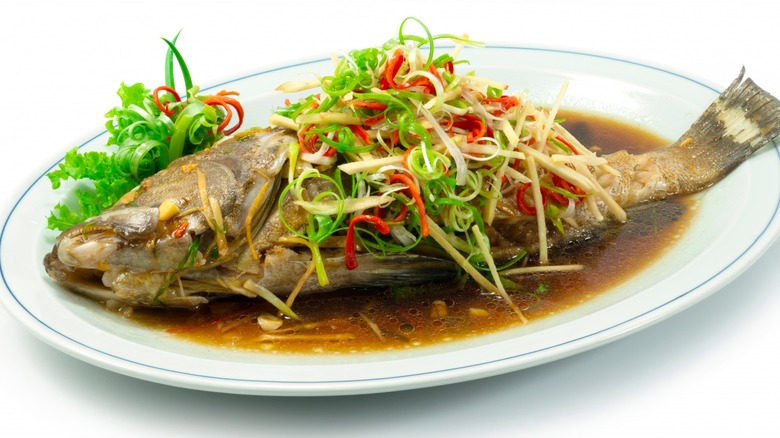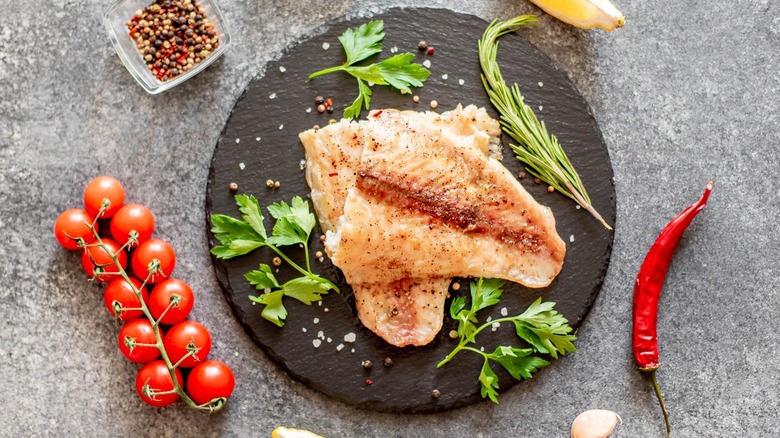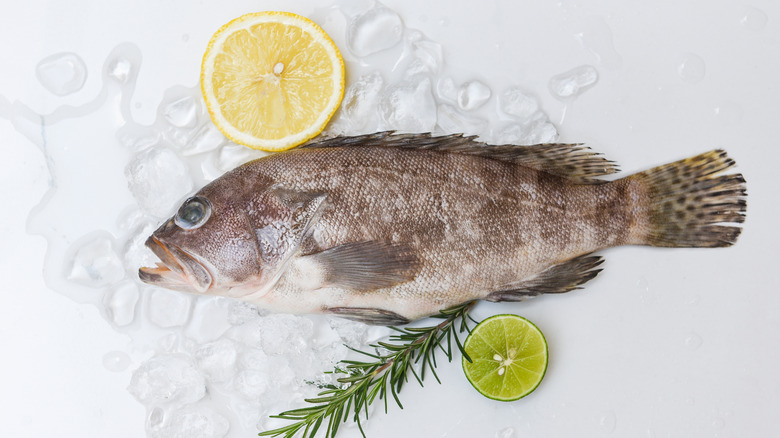Affordable Grouper At A Restaurant Is Probably Too Good To Be True
The restaurant industry has an issue with fake fish. Due to its sweet flavor and flaky texture, Grouper is among the fish for people who don't like fish. That demand makes it kind of expensive, however. So, since the early 2000s, it's become somewhat common for less-scrupulous restaurants and retailers to sell less expensive Pangasius (also known as Asian catfish) in its place. For example, one investigation in Atlanta checked 19 restaurants and found that over ⅓ of the so-called Grouper on menus was actually Pangasius. It's not just Grouper that Pangasius is standing in for, either. Pangasius also ranks among cheap foods that can be overpriced when swapped out for snapper and cod.
These kinds of fishy errors are not just occasional slip-ups with labeling nor are they restricted to the United States. One study of 25,000 pieces of seafood found that 20% of fish was misrepresented. Pangasius isn't the only fish that's getting disguised as something fancier but it's arguably the most common. As a white fish with a neutral taste, it's not too difficult to dress it up as something else, particularly in a dish where it can be masked with a sauce or other strong flavors like herbs and spices.
Why is pangasius (Asian catfish) so cheap?
Pangasius is cheap, fast, and easy to produce in bulk, which is exactly why it's been used as a sneaky substitute for fancier fish. Originally from southeast Asia, Pangasius tends to be farmed around the Mekong Delta in Vietnam. It grows well in jam-packed fish farm settings which would be far too overcrowded for other types of fish to survive. As an omnivore, it's also easy to feed on the cheap. Pangasius farmers tend to feed the fish low-cost rice bran and bits of "trash fish" (pieces of low-quality seafood) to keep costs down.
Pangasius had a reputation in the past for containing toxins but it's safe to eat. Tests generally show that the fish is well within the legal limits for various chemicals and contaminants. That doesn't solve the obvious problem of the fact that nobody wants to pay for something expensive only to be served a cheaper substitute. Plus, Pangasius production has also been connected to environmental degradation as Pangasius farming may have taken away habitats from other creatures in the Mekong Delta.
What's a good price for grouper?
It's very difficult to say exactly how much you should pay for Grouper in a restaurant since there are so many variables that could factor in. Those variables include the restaurant's labor expenses and the presence of other expensive ingredients in the dish. It's worth noting, though, the vast difference in prices between Grouper and Pangasius. Wholesale Pangasius can go for as little as $3 to $4 per pound for filets while whole Grouper go for at least $10 per pound. Also, since they're whole, some of the Grouper's meat will be lost to scaling and gutting. If you're buying Grouper to cook at home, you'll pay the higher market prices, sometimes rising beyond $25 per pound. Bear in mind, however, that these prices are very rough and they shift depending on factors like the type of Grouper and your proximity to an area where people catch them.
So while it's extremely hard to give a "correct" price for Grouper, the vast price gap means you can at least try to guess when you're getting scammed. If a restaurant is offering a $10 grouper dish or a market selling it for $12 a pound, chances are it's too good to be true.


